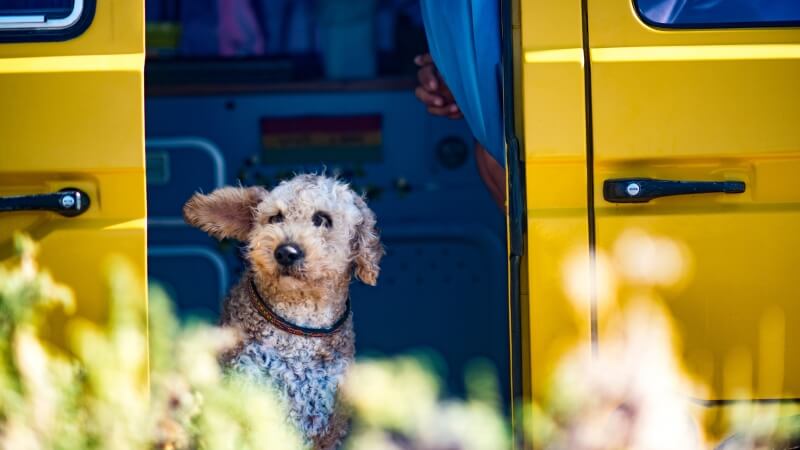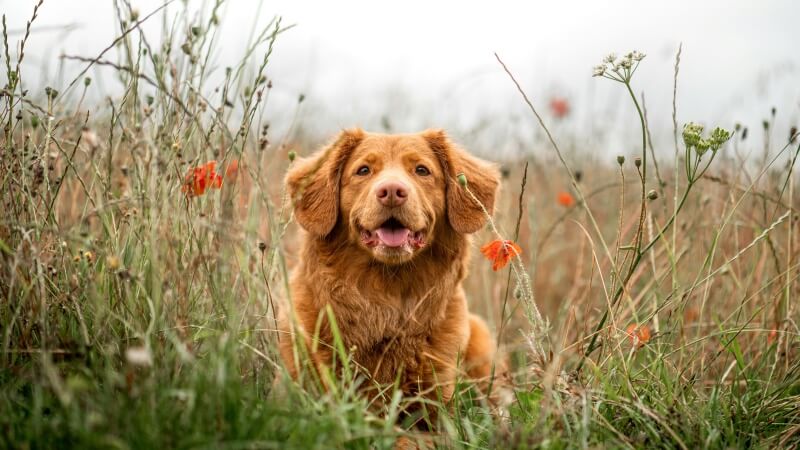
How To Craft A Cozy Cat Vest From Fabric Strips
Have you ever seen your feline friend lounging around and thought, “What could possibly make this picture more adorable?” The answer is simple: a cat

With many people now choosing to use public transportation and rideshares, such as Uber pet, rather than buying a car, the question of how to bring a pet along for the ride is becoming much more frequently asked.
What are the rules and best practices for traveling with a dog or cat when you’re not in a privately owned vehicle?
Various circumstances may require you to transport your beloved pet using a rideshare or public transportation.
You could be heading to a pet-friendly restaurant or a distant park that’s too far to walk to. It might be that your pet needs some pampering at the groomer or, in more serious situations, emergency veterinary care.
Regardless of the situation, when it comes to traveling with your canine companion or feline friend, you have several options to consider.
First and foremost, it’s crucial to understand the legal distinctions when it comes to bringing animals on board Uber, Lyft, taxis, buses, and similar transportation services.
According to the Americans with Disabilities Act (ADA), a service dog is defined as “any dog that is individually trained to do work or perform tasks for the benefit of an individual with a disability, including a physical, sensory, psychiatric, intellectual, or other mental disability… A person traveling with a service animal cannot be denied access to transportation, even if there is a ‘no pets’ policy.”
However, it’s essential to note that emotional support animals and animals other than dogs do not have the same legal requirements for access to public transportation or rideshares.
The ADA specifically states that “emotional support animals, comfort animals, and therapy dogs are not service animals under Title II and Title III of the ADA. Other species of animals, whether wild or domestic, trained or untrained, are not considered service animals either.”
When it comes to bringing your non-service animal pet on buses, trains, or subways, there isn’t a one-size-fits-all rule to follow. Different transportation systems have their own unique policies.
For instance, Amtrak permits pets on its trains, but there’s a limit of four pets per train, and it’s on a first-come, first-served basis.
In the case of New York City’s public transportation, pets are required to be “enclosed in a container and carried in a manner that would not disturb other passengers.”
Meanwhile, San Francisco doesn’t mandate enclosure for pets, but dogs riding their cable cars, MUNI buses, and subways must be leashed and muzzled for safety.
To ensure a smooth ride when planning to take your pet on public transportation, consider these helpful tips:
Wondering about the pet policy of Uber and Lyft, the popular alternatives to traditional taxis and public transportation? When it comes to these ride-sharing platforms, here’s the scoop: Service animals are always welcome in an Uber ride, as required by law.
However, for other pets, including emotional support animals, the decision largely rests with the driver. Unless the law dictates otherwise, it’s ultimately up to your Uber or Lyft driver whether your furry friend, like Fluffy, can join the journey.
To increase the likelihood of your driver accepting your pet as a passenger, consider these strategies:
Traveling with your pet in an Uber pet or on public transportation need not be a daunting experience. With some advance planning and a bit of research, you can ensure that both you and your furry companion have a wonderful journey.
And here’s one more pro tip: consider bringing your pet’s favorite treats, a cozy blanket, or anything that helps them stay calm and occupied. Don’t forget to invest in a sturdy harness for added safety during the ride. Your pet will thank you with a wagging tail for the thoughtful preparation!
Can I bring my pet with me when using Uber Pet?
Uber Pet allows you to bring your pet along for the ride, but it’s essential to check with your driver in advance. While service animals are always allowed, other pets are subject to the driver’s discretion. Communicating with the driver and specifying your pet’s size and breed can increase your chances of a successful ride.
What are the rules for taking my pet on public transportation in San Francisco?
In San Francisco, pets are generally allowed on public transportation, but dogs must be leashed and muzzled for safety when riding cable cars, MUNI buses, and subways. However, it’s essential to check the specific guidelines for the transportation system you plan to use.
Are emotional support animals considered service animals when traveling?
No, emotional support animals are not classified as service animals under the Americans with Disabilities Act (ADA). Service animals are individually trained to perform tasks for individuals with disabilities, while emotional support animals provide comfort but do not receive the same legal protections.
Can I use a soft pet carrier on public transportation?
The acceptability of soft pet carriers on public transportation may vary, so it’s crucial to review the specific pet policy of the transportation system you intend to use. Some systems may require hard carriers, while others may permit soft ones.
How can I ensure a smooth ride when traveling with my pet on Uber or Lyft?
To increase the likelihood of a successful ride with your pet on Uber or Lyft, consider the following:


Have you ever seen your feline friend lounging around and thought, “What could possibly make this picture more adorable?” The answer is simple: a cat

The moment you consider a dog hunting vest for your adventurous companion, you’re stepping into a world where safety meets functionality. This vest is not

The concept of a dog cooling vest is a game-changer for pet owners looking to enhance their dog’s comfort during those relentless summer days. Imagine

When you first consider crafting a tactical dog vest, it’s not just about embarking on a fun DIY project; it’s about ensuring your furry companion’s

Have you ever seen your feline friend lounging around and thought, “What could possibly make this picture more adorable?” The answer is simple: a cat

The moment you consider a dog hunting vest for your adventurous companion, you’re stepping into a world where safety meets functionality. This vest is not

The concept of a dog cooling vest is a game-changer for pet owners looking to enhance their dog’s comfort during those relentless summer days. Imagine

When you first consider crafting a tactical dog vest, it’s not just about embarking on a fun DIY project; it’s about ensuring your furry companion’s
Secure and Empower, Walk Responsibly
Copyright © 2025pettacticalharness. All Rights Reserved.